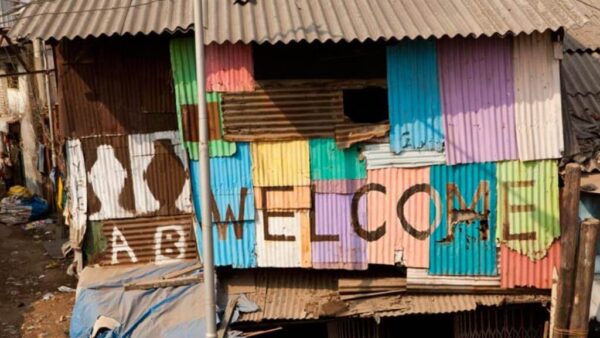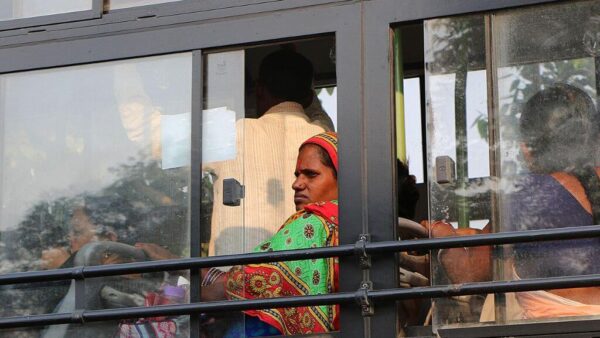Telangana received some hot news this May 29. The India Meteorological Department (IMD) placed the state in the “caution zone”, flagging off that the daytime temperatures there ranged between 35 and 45 degrees Celsius. It was India’s first-ever heat index – a concept that is gaining ground around the world to determine what the temperature “feels like” to people and has been adopted in India this summer on an experimental basis.[1]
The heat index is widely considered a more incisive and near-accurate measurement than mere air temperature or land surface temperature of the heat that human beings and animals battle against. It takes into account the air temperature that’s routinely measured but layers it with metrics such as relative humidity to arrive at a number that is a more correct, real-feel, measurement of exactly how hot it feels.[2]
The heat index figure is usually several degrees higher than the air or land surface temperature. In fact, the term “feels like temperature” or apparent temperature are often used to describe the heat index. Our electronic devices already have weather apps which tell us this. Earlier this week, Mumbai’s temperature on phones read thus: “33 degrees Celsius, feels like 44 degrees Celsius”.
Climatologists advocate that merely communicating temperature to people can be misleading because when combined with factors such as relative humidity, wind direction and speed, green cover, built density and so on, the real temperature they are combating tends to be far higher than that simple metric. The “feels like temperature” leads to heat-induced stress, or heat stress, on the body which could prove hazardous to people’s health – or life.
As many as 14 people died and more than 200 had to be hospitalised on April 16 this year when the Maharashtra government held its Maharashtra Bhushan award ceremony in an open ground in Navi Mumbai and had lakhs of people gathered there for over six hours. The air temperature that day read 38 degrees Celsius but, evidently, the heat index was far higher. Estimates are that it would have been in the mid-40 degrees Celsius range. People apparently took ill from the heat stress and 14 among them died of heat stroke. Those who recovered in the hospital told the local media about the dehydration and exhaustion they had felt waiting for hours in the scorching sun of the afternoon. Parts of Kerala recorded temperatures above 40 degrees Celsius in April too but the heat index had touched or breached the 50 degrees Celsius mark.[3]
In May, the state experienced similar rising temperatures disrupting people’s normal routines and prompting the authorities to chalk out immediate damage control plans. Other parts of India such as Bihar, Jharkhand, Odisha, Uttar Pradesh and Rajasthan have registered temperatures in the upper 30 to lower 40 degrees Celsius range; the heat index, if measured, would have been way higher.
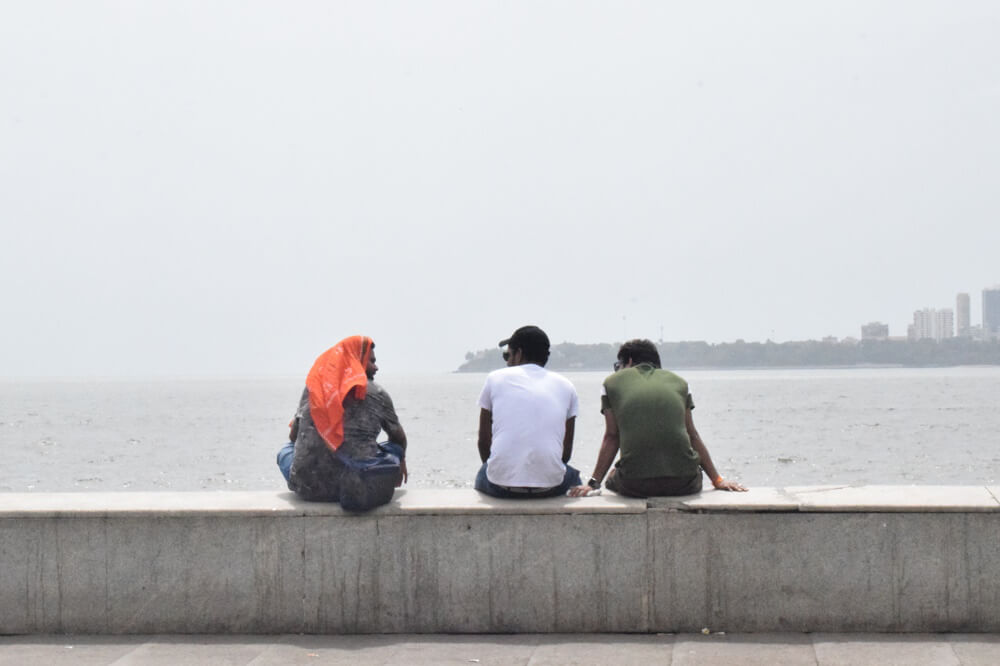
Photo: Dnyaneshwari Burghate
Measure the heat hazard
Climate Change has made heat waves – prolonged high temperatures – more common now, even areas that did not experience high heat are now reporting heat waves. However, this simple metric of air temperature or land surface temperature has increasingly proved insufficient or inaccurate to deal with the impact of high heat on people. As is commonly said, 40 degrees Celsius in the plains is not the same as in coastal areas, it does not mean the same in tropics and deserts.
“Heat stress is mostly caused by temperature but other weather-related factors such as humidity, radiation and wind are also important…Our bodies gain heat from the air around us, the sun, from our own internal processes such as digestion and exercise. In response, our bodies must lose some heat. Some of this we lose directly to the air around us and some through breathing. But most heat is lost through sweating…Meteorological factors affect all this. For example, being deprived of shade exposes the body to heat from direct sunlight, while higher humidity means that the rate of evaporation from our skin will decrease. It’s this humidity that meant the recent heatwave in south-east Asia was so dangerous, as it’s already an extremely humid part of the world,” explained climate scientists Alan Thomas Kennedy-Asser, Dan Mitchell, and Eunice Lo.[4]
The heat index, launched on an experimental basis in March, takes into account the air temperature as well as relative humidity. When communicated as such, people know not only what the day’s maximum and minimum temperatures are but also what “the temperature actually feels like”. IMD Director General Mrutyunjay Mohapatra told the media at the launch that “we are utilising the temperature and humidity data at 2:30 pm for the heat index, and the forecasts as the maximum temperature occurs at that time”.
The IMD began using the formula devised by the United States’ National Oceanic and Atmospheric Administration (NOAA) to calculate the heat index but clarified that the metric is yet to be validated for Indian conditions. Mohapatra informed that the IMD is “coming up with our own system now, a multi-parameter product called ‘heat hazard score’. We hope that it will be better than the others”[5] as it factors in temperature, relative humidity, wind patterns and exposure time.
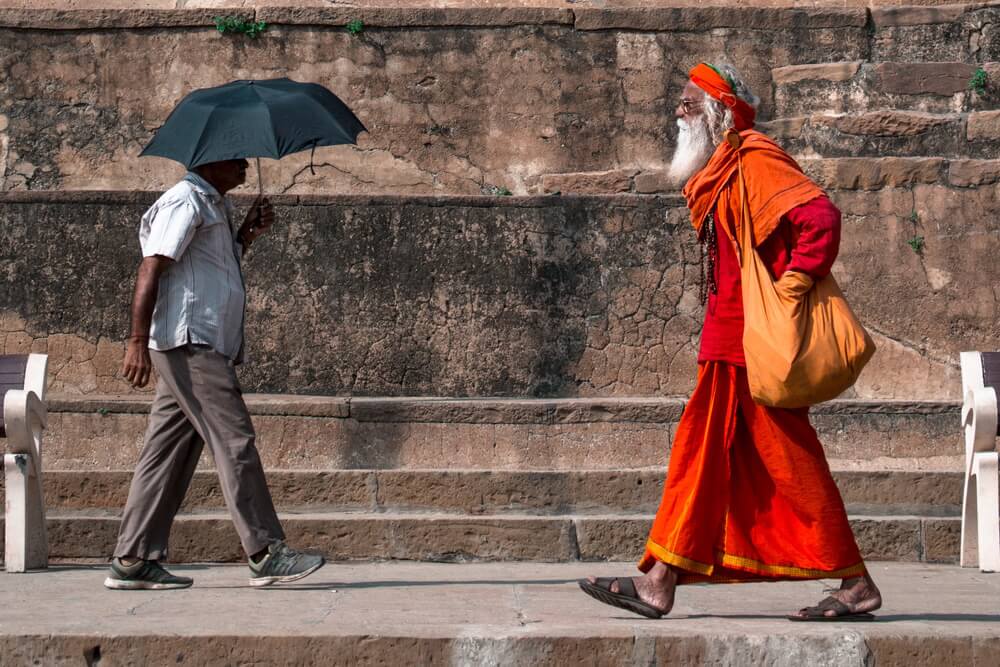
Photo: Frank Holleman/Unsplash
The heat index for Indian conditions, or the heat hazard score, which the IMD hopes to have in place by next year, will alert people – and governments – to take precautionary measures in time. Evolving a heat index for India and communicating it to people has not come a day too soon; it is crucial for people to know what the temperature “feels like”. The four categories of excess heat measured in the index are communicated as zones – caution zone, extreme caution zone, danger zone, and extreme danger zone – which progressively alert people to possible heat stress, heat cramps, heat exhaustion, and heat stroke. The excess heat factor methodology has been adopted as the standard metric in Australia.
Why India needs a heat index
Typically, the IMD and independent meteorologists put information in the public domain about minimum and maximum temperatures for different cities or regions. This enabled the declaration of a heat wave. The IMD uses two parameters to classify abnormally hot temperature as a heat wave: The maximum temperature recorded at its local meteorological station and departure from the normal in that station.
When the maximum temperature reaches 40 degrees Celsius in the plains and 30 degrees Celsius in the hills, it considers and warns that there could be a heat wave. It is declared as such if the maximum temperature crosses 45 degrees Celsius and is at least 4.5 degrees above normal for two days. A severe heatwave is declared when the temperature is above 40-45 degrees Celsius and more than 6.5 degrees above normal for that station over two days. Lately, the IMD has begun issuing heat wave alerts in colours ranging from yellow to amber to red, making it easier for people to comprehend the severity of the situation.
However, it is still one metric of the temperatures recorded and does not factor in other parameters which determine what is the level of hazard people face. A maximum temperature of 38 degrees Celsius in humid cities like Mumbai and Chennai feels harsher and more unbearable than in the plains. This underscores the need for a composite heat index, or heat hazard score, which allows people to know the actual heat level around them. This has become critical given that Indians suffered through 200 heat wave days last year with some of the hottest months since 1901. India (and Pakistan) is among the world’s hotspot regions for heat waves in the world.
“A relative humidity of 90 per cent has the effect of 45 degrees Celsius. With higher relative humidity, we perspire as a result the body’s temperature increases without getting a chance to dissipate the temperature. So, in coastal areas, a lower temperature creates more discomfort and fatalities than in areas where relative humidity is less,” says Kamal Lochan Mishra, former executive director, Odisha State Disaster Management Authority (OSDMA). In the state capital Bhubaneswar, a coastal city, 35 degrees Celsius feels more like 45 degrees Celsius whereas Nabarangpur, which is 520 kilometres from Bhubaneswar, would feel like 35 degrees Celsius when the temperature records as such.
Heat is a silent killer, often ignored, in tropical countries like India. With increasing frequency and intensity of heat waves, triggered by Climate Change among other factors, it has become imperative to go beyond the minimum-maximum reading that has been traditionally done in the country. Heat index, or heat hazard scores, will enable planning measures to combat extreme heat and equip people with the information they need to take decisions about their lives; it could help decide everything from working during afternoon hours to staggering school and office timings, and so on.
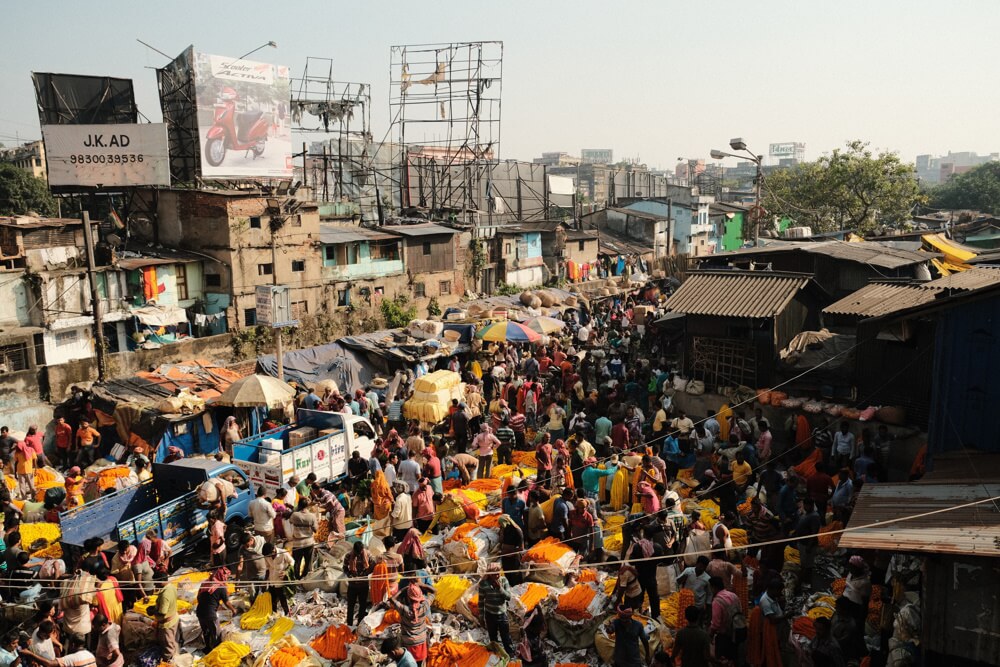
Photo: Austin Curtis/Unsplash
The more granular, the better
Heat waves are recorded in places but the heat stress and its impact are borne by people. The more finely calibrated, nuanced, and layered India’s heat index can be, the more accurately heat stress can be predicted and tackled. Experts in the domain are calling for making the heat index or heat hazard score as granular as possible, at city and district levels. Just as flooding during heavy rain is a local issue with some areas in a city experiencing higher water levels than others – as a result of local factors such as built environment and green cover – heat too is localised.
In the same city, areas with abundant green cover and lower density of buildings are likely to show a lower reading on the heat index than areas that have no greens but closely-spaced tall buildings. The latter classified as the Urban Heat Island effect underscores the need for a granular heat index.
Dr Rajashree Kotharkar, professor at Department of Architecture and Planning, Visvesvaraya National Institute of Technology in Nagpur, who has researched heat in India and advises on a model Heat Action Plan, says each place would have a particular index. “It is good that the IMD is releasing the daily heat index. But additionally, all cities will have to conduct studies to find out local thresholds which is a basic requirement for Heat Action Plans. Currently, we have the same threshold throughout the country – 45 degrees Celsius for plains, 37 degrees for coastal, and 30 degrees Celsius for hill areas. Trying to find a threshold for each district (or city) will take time” she said to Question of Cities.
While it may be fanciful to expect area-wise heat indices for cities or districts at this stage, it should be the way forward for the IMD. For now, even if cities and districts are able to receive localised heat index readings, on a dynamic basis through the day as far as possible, it would help to mitigate the heat stress that people face and help avert heat-related illness and fatalities during a heat wave. In Navi Mumbai, for example, a heat wave had not been declared that fateful day in April but clearly the heat index was high enough for hundreds of people to take ill.
Ideally, it would be sensible to also communicate the Wet Bulb Temperature (also called Wet Bulb Globe Temperature) in addition to the heat index or heat hazard score. The Wet Bulb Temperature is a measure of the heat stress that people feel in direct sunlight; it considers the ambient temperature, factors in relative humidity and wind speed as the heat index does, and additionally calculates the sun angle and cloud cover or solar radiation.
With millions of Indians in direct sunlight through the day, this would be an important metric to have. A staggering 75 per cent of India’s labour force is employed in outdoor or heat-exposed work, according a report by McKinsey Global Institute.[6]
The incidence of outdoor work and the number of hours spent working outdoors are projected to increase in the coming years. Official data showed at least 8,500 heat-related illnesses from March to May this year.
The cumulative heatwave-related mortality in India is over 24,000 deaths since 1992.[7] This is only the recorded figure and likely to be an under-estimate given that heat-related death data is not always recorded and the full impact of a heat wave is often not known until weeks or months later. A recent report averred that heat waves are among the deadliest natural hazards with thousands of people dying from heat-related causes each year and many more suffering severe health and livelihood consequences, and that heat waves across India and Bangladesh were 30 times more likely.[8]
While the focus has been on drawing up and implementing Heat Action Plans – which are sorely needed to combat the increasing incidence of heat waves – developing a reliable heat index and effectively communicating it to people through all media would go a long way in prevent heat stress and heat-related illnesses because the future is hotter than ever.
Shobha Surin, currently based in Bhubaneswar, is a journalist with 20 years of experience in newsrooms in Mumbai. She has seen Bhubaneswar from close quarters as the quiet green city transformed into a bustling concrete jungle. An associate editor at Question of Cities, she is concerned about Climate Change and is learning about sustainable development.
Cover photo: Jashvitha Dhagey


